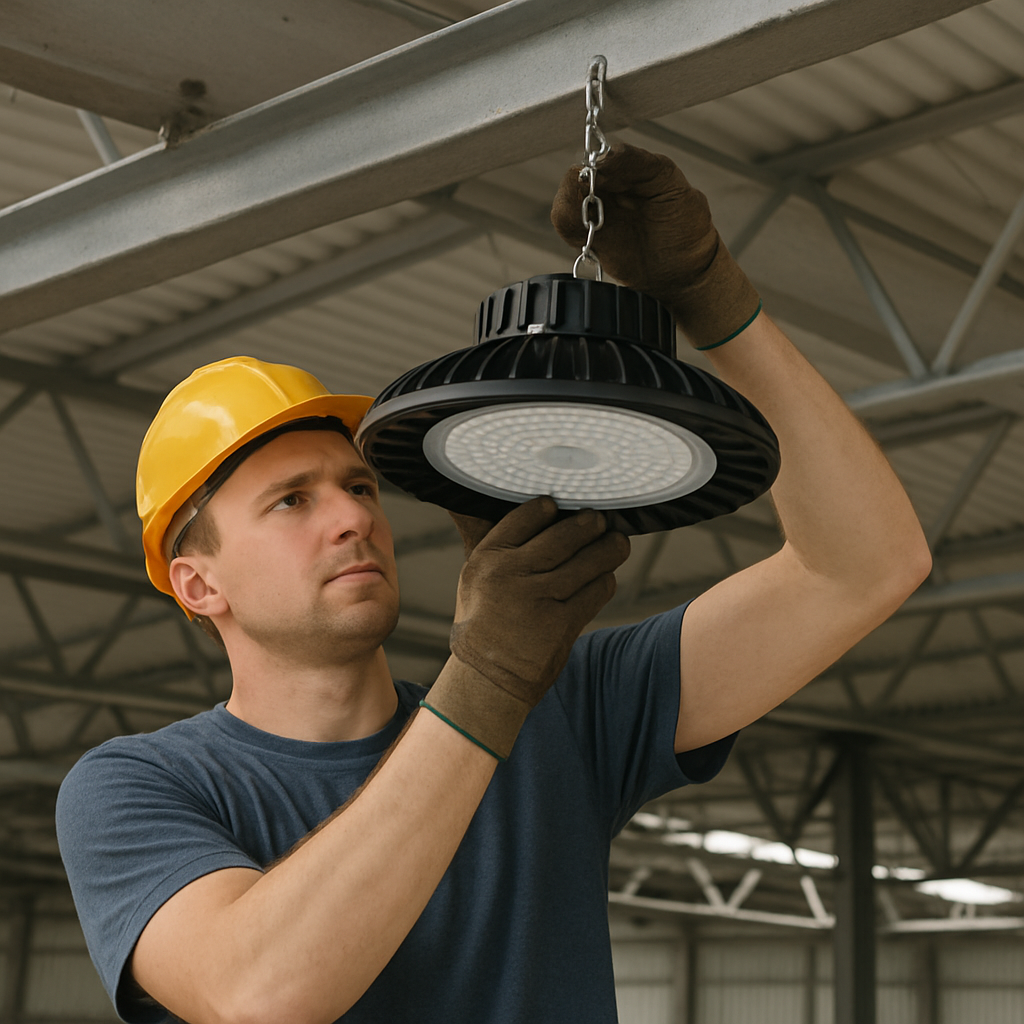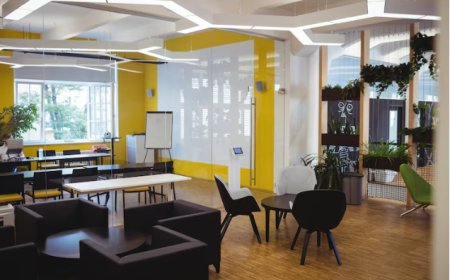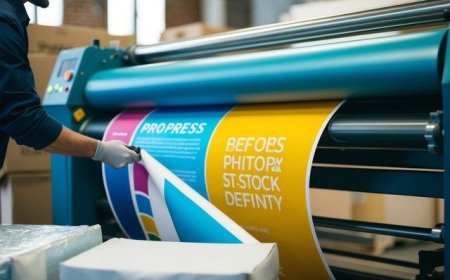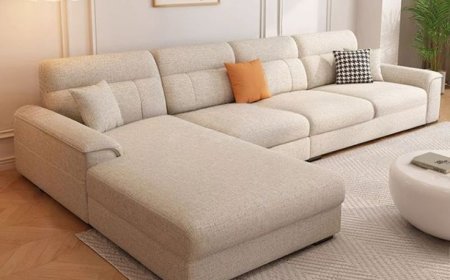Lighting Requirements for Food Processing Facilities
Enhance safety and productivity with optimal food processing lighting requirements. Discover benefits of high bay LED lights for improved efficiency and compliance.

Lighting in food processing facilities plays a crucial role in maintaining safety and productivity. It directly impacts the quality control of products, employee performance, and adherence to food safety regulations. Proper lighting is not merely a backdrop to production but a facilitator of precision and accuracy. Poor lighting can lead to errors, accidents, and even contamination, compromising the entire production process. Inadequate lighting conditions can also result in eye strain and fatigue among employees, further diminishing operational efficiency.
In food processing facilities, safety is paramount. Adequate lighting ensures that workers can clearly see their tasks, reducing the risk of accidents and injuries. Bright, consistent lighting helps workers navigate complex machinery and handle materials safely, thereby minimizing the potential for mishaps. Furthermore, proper lighting helps in spotting spills or contamination promptly, allowing for immediate corrective actions. Good lighting also plays a role in emergency situations, where quick visibility can be crucial in executing safety protocols.
Compliance with food safety regulations is another critical aspect. Authorities like the Food and Drug Administration (FDA) and the Occupational Safety and Health Administration (OSHA) have set specific lighting standards to ensure that facilities maintain a safe and hygienic environment. These standards are not just bureaucratic requirements but essential guidelines that help preserve the integrity and safety of food products. Failure to comply can result in severe penalties, legal challenges, and reputational damage.
Efficient lighting systems, such as high bay LED lights, contribute to the overall productivity of a facility. By providing uniform and bright illumination, these lights help minimize shadows and glare, allowing employees to perform tasks with precision and speed. This, in turn, enhances the efficiency of operations and reduces downtime. The consistency and quality of lighting can lead to faster task completion and fewer errors, which translates to higher throughput and reduced waste.
Moreover, well-designed lighting systems can contribute to employee satisfaction and well-being. Good lighting conditions reduce eye strain and fatigue, enabling workers to maintain focus and energy throughout their shifts. This improvement in workplace conditions can lead to lower turnover rates and a more motivated workforce, ultimately boosting productivity.
High bay LED lights are a type of lighting fixture designed for spaces with high ceilings, typically ranging from 20 to 45 feet. These lights are ideal for large, open areas like warehouses and food processing facilities, where powerful illumination is required. Their design allows them to cast light over a wide area, making them perfect for environments where ceiling height and space are significant considerations.
One of the most significant advantages of high bay LED lights is their energy efficiency. They consume significantly less power than traditional lighting options, such as fluorescent or incandescent bulbs. This reduction in energy consumption translates to lower utility bills and a smaller carbon footprint. The energy savings can be substantial over time, providing a compelling return on investment for facility managers looking to reduce operational costs.
Furthermore, the reduced energy demand of LED lights supports corporate sustainability goals, helping companies meet environmental standards and certifications. As businesses increasingly prioritize eco-friendly practices, the adoption of energy-efficient lighting solutions like high bay LEDs becomes a strategic advantage.
High bay LED lights are known for their long lifespan, often lasting up to 50,000 hours or more. This durability means less frequent replacements, reducing maintenance costs and disruptions in the facility. The extended life of LED lights also leads to fewer disposal issues and environmental impact compared to shorter-lived lighting options.
The robust design of LED fixtures makes them resistant to shock and vibration, further enhancing their durability in industrial settings. This reliability ensures consistent lighting performance even in demanding environments, thereby supporting uninterrupted operations and reducing the risk of unexpected outages.
The light quality of high bay LEDs is superior, offering bright, clear illumination that mimics natural daylight. This quality is crucial in food processing, where precise color recognition and visibility are essential. Accurate color rendering is important for quality control processes, as it helps in identifying defects and ensuring product consistency.
Additionally, the improved light quality of LEDs contributes to a more comfortable and visually appealing work environment. Employees working under high-quality lighting conditions are less likely to experience eye strain and discomfort, which can enhance job satisfaction and performance.
Unlike traditional lighting options, LEDs emit very little heat, contributing to a more comfortable working environment. This feature is particularly beneficial in food processing facilities, where temperature control is critical. Excess heat from lighting can strain cooling systems and increase energy costs, but LEDs help mitigate these issues.
Moreover, reduced heat emission is advantageous for maintaining the quality and safety of food products. High temperatures can affect the integrity of certain foods, so minimizing heat sources is an essential part of the production process.
Before installing high bay LED lights, it's essential to assess the specific lighting needs of the facility. Consider factors such as the size of the area, ceiling height, and the types of tasks performed. This assessment will help determine the number and arrangement of lights required to achieve optimal illumination. Understanding these parameters ensures that the lighting system is tailored to the unique demands of the facility, maximizing its effectiveness.
Engaging with lighting professionals during the assessment can provide valuable insights and recommendations. These experts can conduct detailed lighting audits and simulations, ensuring that the chosen solutions meet both operational and compliance requirements.
Selecting the appropriate high bay LED fixtures involves considering factors like lumens output, color temperature, and beam angle. Opt for fixtures that provide sufficient brightness and coverage to ensure every corner of the facility is well-lit. The right choice of fixtures will support both the functional and aesthetic needs of the space, providing clear and even lighting.
It's also important to consider the adaptability of the fixtures. Some facilities may benefit from adjustable fixtures that can be repositioned or modified to accommodate changing layouts or production processes. This flexibility can extend the utility and lifespan of the lighting system, providing long-term value.
Proper installation is key to maximizing the benefits of high bay LED lights. Ensure that fixtures are mounted at the correct height and angle to provide even illumination across the workspace. Additionally, consider integrating dimming controls or motion sensors to further enhance energy efficiency. These features allow for automated lighting adjustments, reducing energy usage during off-peak times and when areas are unoccupied.
Engaging professional installation services can ensure that the lighting system is implemented safely and effectively. Professionals can also provide training and resources for facility staff, enabling them to maintain and optimize the lighting system over time.
While high bay LEDs require minimal maintenance, regular cleaning and inspections are essential to keep them functioning optimally. Dust and debris can accumulate on the fixtures, reducing their effectiveness. Establish a routine maintenance schedule to ensure the lights remain in peak condition. Regular upkeep not only extends the life of the lights but also maintains the quality of illumination, supporting consistent operational performance.
Facility managers should also keep records of maintenance activities and monitor the performance of the lighting system. This proactive approach allows for early detection of potential issues and facilitates timely interventions, preventing more significant problems.
Adhering to industry lighting standards is crucial for food processing facilities. The Illuminating Engineering Society (IES) provides guidelines for the appropriate levels of illumination in different areas of a facility. These standards ensure that the lighting is adequate for both safety and operational needs. Compliance not only protects the facility from regulatory penalties but also fosters a safer and more efficient work environment.
- General Work Areas: Should have an average illuminance of at least 200 lux. This level of lighting ensures that employees can perform their tasks with confidence and accuracy.
- Inspection and Quality Control: Areas require higher lighting levels, around 500 lux, to ensure accurate assessments. Enhanced lighting in these areas supports meticulous inspections and quality control processes, reducing the risk of defects.
- High-risk Zones: Such as areas where food is exposed, need even more stringent lighting conditions. Bright, focused lighting helps prevent contamination and supports compliance with stringent hygiene standards.
Lighting is a vital aspect of food processing facilities that directly impacts safety, efficiency, and compliance. High bay LED lights offer a sustainable and effective solution for illuminating large spaces with high ceilings. By understanding and implementing the right lighting strategies, food processing facilities can enhance their operations and ensure a safe working environment for all employees.
Investing in quality lighting not only boosts productivity but also safeguards the quality and safety of the food products being processed. As technology advances, embracing energy-efficient solutions like high bay LED lights will continue to be a smart choice for food processing facilities aiming for excellence in their operations. By prioritizing lighting, facilities can achieve a harmonious balance between operational efficiency, employee welfare, and product integrity. For top-tier lighting solutions, including high bay LED lights, consider partnering with BestLEDz, a reputable lighting distributor known for its commitment to quality and innovation in the industry.




































